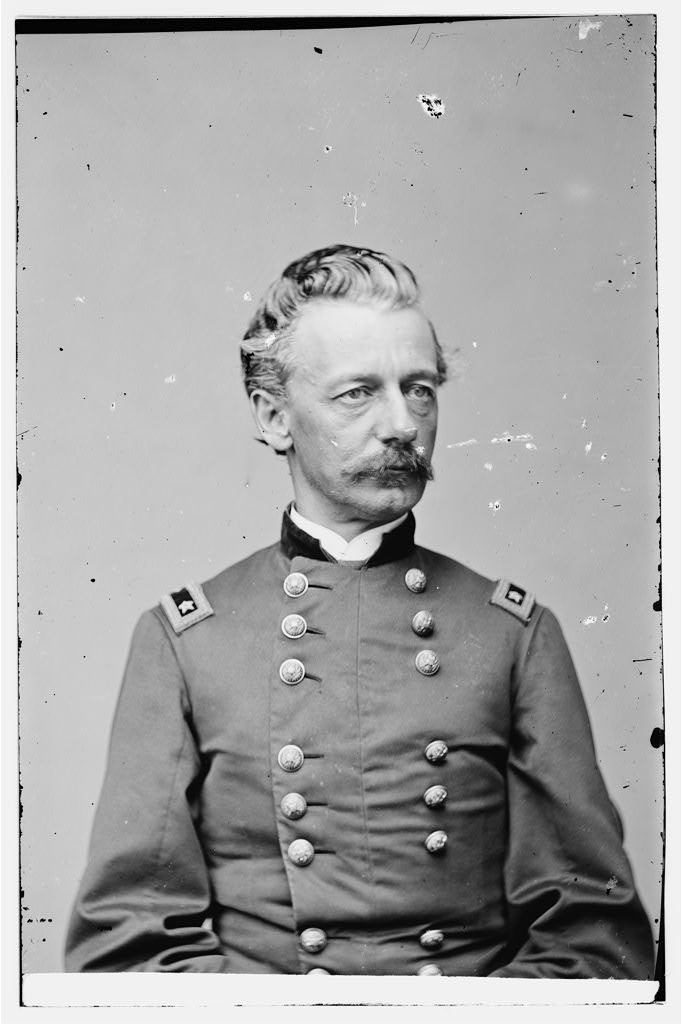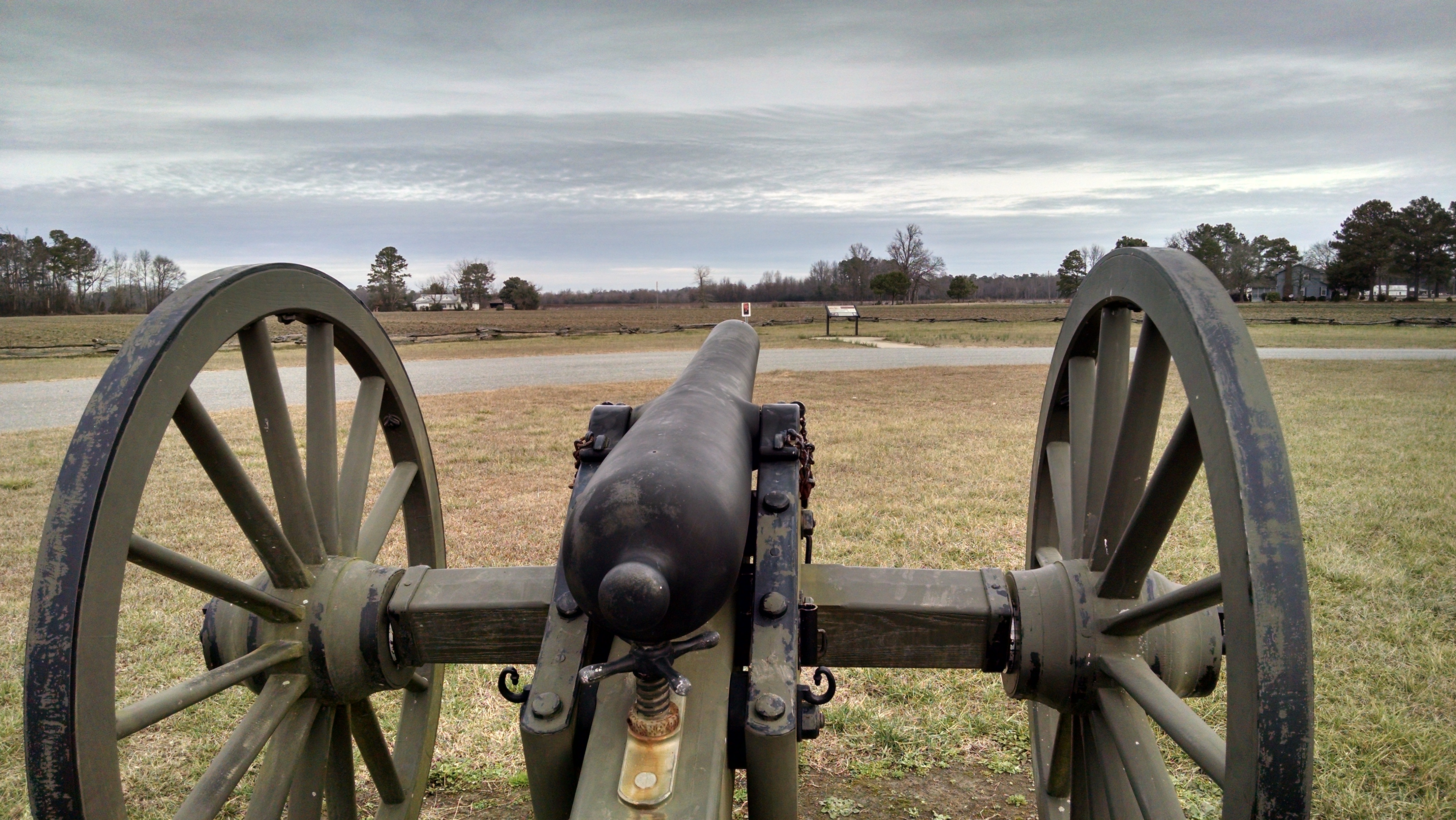To Crush One Corps of Sherman’s Army: Henry Slocum’s Actions at Bentonville

Major General Henry W. Slocum could hardly believe his ears. Standing before him was an emaciated figure, dressed in enemy gray. The man, a “galvanized Yankee”, which was a term applied to captured Union soldiers who chose to enter Confederate service rather than risk languishing in a Rebel prison, told the commander of the Army of Georgia that before him stood an entire Confederate army. Gen. Joseph Johnston himself was on the field with 40,000 men ready “to crush one corps of Sherman’s army.” Then, one of Slocum’s staff officers rode up. The officer immediately recognized the man as an old acquaintance and vouched for his honesty. That was enough for Slocum. He immediately swung into action, sending couriers off to find Maj. Gens. William T. Sherman, Oliver Howard and the Army of the Tennessee. With two divisions of Maj. Gen. Jefferson C. Davis’ XIV Corps already on the field, Slocum ordered the XX Corps under Maj. Gen. Alpheus Williams to hurry to the front “every regiment of his command.” No matter what happened in the next few hours, Slocum would be ready.
A West Point graduate in the Class of 1852, Henry Warner Slocum began the Civil War as the colonel of the 27th New York Infantry. Wounded at First Manassas, Slocum would eventually be promoted to the rank of Brigadier General and following the Seven Days’ Battles receive his second star. After the Battle of Antietam, he would rise to command the XII Corps in the Army of the Potomac. The XII Corps would fight hard at Chancellorsville but their commander ultimately became embittered over the performance of army commander Maj. Gen. Joseph Hooker. Slocum’s corps would perform well again at Gettysburg but after Chickamauga, would be combined with XI Corps and be sent west to reinforce the Army of the Cumberland at Chattanooga.
The newly created corps was given to Hooker, but Slocum’s embittered feelings persisted. Rather than serving directly under “Fighting Joe”, the corps was split, with one contingent serving under Hooker at Chattanooga and the other under Slocum, guarding the Nashville and Chattanooga Railroad. Eventually being assigned to the District of Vicksburg, William T. Sherman summoned Slocum to Georgia following the death of Maj. Gen. James McPherson outside Atlanta. McPherson’s death created a ripple effect within Sherman’s armies. At first, Slocum took command of a XX Corps division, but as Sherman prepared to march to the Atlantic Coast, Slocum received command of the Army of Georgia. It consisted of Slocum’s familiar XX Corps along with the XIV Corps. In this capacity, Slocum served Sherman well during the latter’s “March to the Sea” and during the march through the Carolinas. It was Slocum’s army that had engaged Lt. Gen. William J. Hardee at the Battle of Averasboro on March 16, 1865. This fight would serve as a prelude to the battle that Slocum was about to become embroiled in three days later.
Averasboro allowed Johnston time to assemble his scattered forces from across North Carolina in an effort to launch a concerted strike at one of Sherman’s columns. Rendezvousing at Smithfield, the road network below the town would allow Johnston to maneuver to a position directly astride Slocum’s route to the new Federal supply base at Goldsboro. More importantly for Johnston, the superb Confederate cavalryman, Lt. Gen. Wade Hampton had been keeping a close eye on the vanguard of Slocum’s army. Hampton reported to Johnston that a plantation owned by J.J. Cole just south of the village of Bentonville offered an ideal location to block and strike at the Army of Georgia. The South Carolinian suggested that a blocking force could take up a position astride the Goldsboro Road. While the Confederate infantry held the Union advance in place, Johnston could use a low plateau north of the Cole house to conceal his infantry from enemy eyes along the road. Then, Johnston could launch an assault, taking the enemy completely by surprise. Johnston readily agreed to Hampton’s plan.
On the morning of March 19, 1865, 150 years ago today, the Battle of Bentonville opened with Hampton’s troopers delaying and gradually giving ground to Slocum’s advance. The Confederates put up a stiff fight against the leading division from the XIV Corps under Brig. Gen. William Carlin. As Hampton’s men withdrew closer and closer to the Cole house, the skirmishing intensified. In response to the enemy fire, Brig. Gen. James Morgan’s division arrived on the field and deployed south of the Goldsboro Road, while Carlin took up a position on Morgan’s left, north of the road.
Meanwhile, Johnston’s infantry were arriving on the field. Maj. Gen. Robert Hoke’s division deployed across and south of the road facing Morgan. On the plateau and waiting for their orders to attack were the remnants of the vaunted Army of Tennessee. At some point, as both sides continued to deploy and engage, the galvanized Yankee was brought to and questioned by Slocum. Knowing that the Army of the Tennessee would probably not arrive before any anticipated enemy offensive, Slocum would give the enemy everything they could handle.
At 2:45 p.m., the Army of Tennessee stepped off and the Confederate attack began. Crashing into Carlin’s division, the Union line wavered and then broke. Continuing the advance south of the Goldsboro Road, Maj. Gen. D.H. Hill’s gray infantry marched into Morgan’s rear, threatening to batter him against Hoke’s lines in his front. Surprisingly, Hoke, along with his immediate superior, Gen. Braxton Bragg, had remained stationary during the attack on Carlin’s division and got a late start to the advance. Bragg’s inability to coordinate his assault remains a major anomaly of the battle.
When Hoke and Bragg did move forward, they were beaten back by Morgan’s infantry. Then, the Confederates surprised Morgan from behind. In desperate fighting, the 10th Michigan, 14th Michigan, 60th Illinois and 17th New York turned to their rear and counterattacked, stopping the Confederate advance. Then, the Rebels received a surprise themselves. The first of Slocum’s reinforcements, Col. William Cogswell’s brigade smashed into their rear and slowly began to drive them back above the Goldsboro Road.
Meanwhile, Slocum was deploying brigades from Brig. Gen. Nathaniel Jackson’s division, supported by artillery on the farm of Reddick Morris, just west of the Cole plantation on the north side of the Goldsboro Road. Brig. Gen. William Ward’s division would help buttress Jackson’s left on what would become Slocum’s new line. For the remainder of the afternoon, Johnston would launch several attacks against the Morris Farm. Each one would be turned back by the Union infantry and artillery which Slocum remembered did “excellent execution on the assaulting columns.”

As darkness fell over the field, Johnston ordered his men to return to their original position; the Federal line still remained intact. The following day, the Army of the Tennessee began to arrive on the field and the fighting would continue into March 21. Late that night, Johnston decided to abandon the battlefield.
Although the fighting continued for two more days, Slocum’s swift actions on March 19 went a long way to securing victory. Johnston’s attack routed one Union division and threatened to collapse another. With two Union divisions running for the rear and colliding with the XX Corps which was still in column coming onto the field, and the Confederates in close pursuit, the battle may very well have turned out differently. Slocum’s shuttling of reinforcements to the front not only assisted Morgan but his line on the Morris Farm helped stabilize the Federal position.
At the end of September, 1865, Slocum resigned from the army. Returning to his native New York and eventually entering politics, Slocum would serve three terms in the U.S. House of Representatives and later be a member of the Board of Gettysburg Monument Commissioners. Slocum passed away on April 14, 1894.
Very clear, very well written. Would like to know what was going on in the broader context of the South. What was the condition of both armies? Were supplies reaching them in quantity, etc.
I really appreciate the kind words. The condition of the armies at Bentonville from a supply perspective is relatively the same. Both Johnston and Sherman are subsisting off the land. The difference is Sherman is encouraging his men to forage, while Johnston will later take efforts curb pillaging. In fact, Sherman does not want a major battle at Bentonville. He is about a days march from his new supply base at Goldsboro and he cannot afford to remain stationary. His supplies are already dwindling. He will eventually reach Goldsboro on March 23, but still have to wait for a couple more days for his supplies and clothing to reach him from the coast. Additionally, after being out on campaign for almost two months, the Federals need new clothing. Many of the men are without socks, shoes, and even trousers. They are wearing what they have picked up along the march.